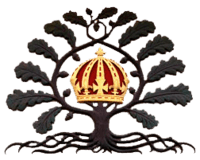Neo-Guelph
| Part of the Politics series on |
| Toryism |
|---|
 |
|
Characteristics
|
|
The Neo-Guelph or Neo-Guelphism movement was a Nineteenth century Italian political society which wanted to unite Italy into a single kingdom with the Pope as its king. Its leading light was Vincenzo Gioberti in some ways ties in with the philosophy of Geobertism itself. However, it received very little popular support. Neo-Guelphists were concentrated in the north, particularly Piedmont. They were also linked both to ontologism, a philosophical movement, and rationalist-leaning theology. Many Neo-Guelphists thought that Giovanni Mastai-Ferretti (elected pope Pius IX in 1846) would boost their cause, but he rejected their movement. This rejection was disheartening to Catholic liberals everywhere, and the anti-clerical left saw it as proof that the papacy was inherently reactionary—ready to sacrifice its very autonomy and an Italian state simply to protect narrow temporal interests, such as noble interests in the papal states. Popes generally came from this nobility, to say nothing of the curia and Vatican hierarchy in general.
The movement was later abandoned after piedmont 'expansionist', Giuseppe Garibaldi, led his Expedition of the Thousand in 1860. The expedition eventually led to Italian unification under Piedmont, however, leaving the Papacy as its own individual state. This pleased the fears from Roman Catholic countries such as France who believed that a unified Italy could 'corrupt' the Papacy.
External links
- Sardinia-Piedmont, Kingdom of, 1848-1849 A lecture
- The Political Significance of the Papacy, Historically and in the Present Period Journal of Religion and Society. Volume 7, 2005. The Kripke Center. Anthony Mansueto of the University New Mexico-Gallup
- 1911 Britannica article on Camillo Benso, conte di Cavour